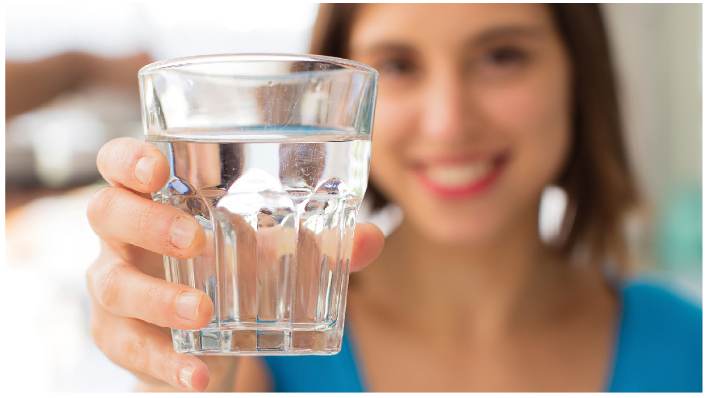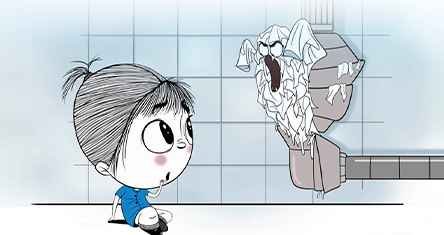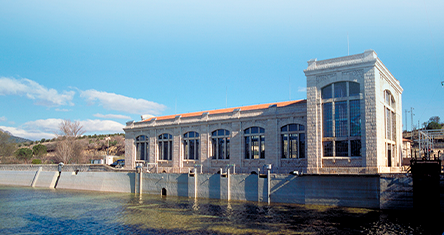
10 COMMITMENTS AS CLEAR AS MADRID'S WATER
As we want to speak to you clearly and offer you more solutions for your needs, we have taken another step in our relationship with you. We assume 10 commitments with which to continue providing you with a quality, fair and transparent service. 10 commitments as clear as the water of Madrid.
CANAL IN 60 SECONDS
The care of our rivers begins in thewaste water treatment plants and continues in our laboratory in Majadahonda, where we analyze the water that we return to the rivers. Julio Rodrigo explains what the analysis of treated waste water consists of and why it is so important for the environment.
COMMITED TO SUSTAINABILITY
In 2021, the year of our 170th anniversary, we promoted environmental care from all our activities. This year, we continue working to keep guaranteeing the water supply, contributing to the protection and improvement of the environment, the promotion of the circular economy and the sustainability of the region.
Blog
DE MADRID Y DEL GRIFO
In our blog you will find tips to save water and learn how we work to convey it with the best quality to your tap in Madrid
DE MADRID Y DEL GRIFO
In our blog you will find tips to save water and learn how we work to convey it with the best quality to your tap in Madrid
FROM MADRID'S TAP

Suscríbete al blog
THE CLEAN ENERGY THAT WATER BRINGS
At Canal de Isabel II we have facilities that, in parallel with supply and sanitation, allow us to generate renewable energy and achieve a high degree of electrical self-sufficiency.

When you hear the name Canal de Isabel II, it is likely that you associate it first with water. And you’d be right; but to be honest, there’s much more to us than that. For example, we are also electricity, energy. A lot of energy. This may surprise you, but for years we’ve been the company with the greater installed capacity in electrical energy generation in the Region of Madrid, with a total of 107 megawatts.
The fact is that, at Canal de Isabel II, we have facilities that, in parallel with supply and sanitation, allow us to generate renewable energy and achieve a high degree of electrical self-sufficiency.
If you’re wondering exactly where all that energy we produce comes from, we have the answer to hand:
- 9 hydroelectric plants.
- From 13 purification plants equipped with generator sets that use the biogas generated in the purification.
- From 2 co-generation plants associated with thermal drying of sludge.
- From 3 small wastewater waterfalls that exploit the difference in elevation at the discharge point.
- From 9 microturbines installed at different points in the supply network.
- From 2 purification stations with several photovoltaic solar panels.
Thanks to the combined performance of these facilities, last year we beat our electricity generation record: in total, 363.9 million kilowatt hours, equivalent to 77% of our total consumption. The closing of the year was especially positive, since in the month of December 2019 we achieved the highest monthly production figure: 42.9 million kilowatt hours (111% of the total consumption).
HYDROELECTRIC POWER PLANTS AND CO-GENERATION ARE OUR HEAVYWEIGHTS
The 9 hydroelectric plants we manage through Hidráulica Santillana have made it possible to achieve those record figures. These infrastructures exploit the waterfalls at the reservoirs to transform the water’s energy into electricity. With an installed capacity of almost 36 megawatts, in 2019 they managed to produce more than 80 million kilowatt hours. Canal de Isabel II consumed 23% of it, and transferred the remainder to the electricity network.
The 2 co-generation plants are the other bastion of energy, with an installed capacity of 44.70 megawatts. One of these facilities is the Loeches Sludge Treatment Unit, which opened in 2010 with the twin aims of recycling part of the mud produced in the purification plants and of generating energy to supply it. The other is the Thermal Drying Plant at the Sur WWTP, which was a major boost to energy production in the area. Between the two facilities, we managed to produce, by co-generation, 183 million kilowatt hours in 2019.
The third main leg of this energy stool is also found in the WWTPs, specifically, in the 13 of them that have generator sets that can produce electricity from the biogas yielded from the purification processes. To be precise, over the past year we managed to generate almost 100 million kilowatt hours of electricity by means of co-generation of the biogas from the purification plants. This is equivalent to supplying electricity to a town with a population of more than 75,000, such as Valdemoro.
WATERFALLS AND MICROTURBINES TO COMPLETE THE PUZZLE
We have added to the above facilities, which are models of electricity production, with other small pieces which, though their electricity generation is modest, also contribute to increasing the figures for clean energy produced. On the one hand, at the Sur and La Gavia WWTPs, we exploit a small wastewater waterfall at the discharge point to generate electricity thanks to that difference in elevation. On the other hand, years ago we decided to exploit for energy generation the force with which the water flows through the pipes of the supply system: we have now installed 9 microturbines spread over the region of Madrid.
Microturbines are a singular technology. They are compact, so they require hardly any space to work properly, and several of them can work at the same site. What’s more, they need no oils or elements that harm the water quality, they can work with a great variety of pressures and allow for very simple handling and assembly.
These microturbines, which have no environmental impact and which are completely environmentally friendly, can produce energy for the consumption of the facilities hosting them and also to deliver to the distribution network.
A TOOL FOR FIGHTING CLIMATE CHANGE
This energy use, which we seek to exploit to the maximum, is our best weapon to combat climate change and mitigate emissions of carbon dioxide to the atmosphere. It’s not for nothing that, thanks to generating clean energy we managed to avoid the emission of about 26,000 tonnes of CO2 in 2019 alone.
But we’re not content with that. Our plans for the future involve an even more ambitious aim: to become the first European integrated water cycle company to be fully self-sufficient in energy terms.
From microhydraulic to photovoltaic, from co-generation to biogas, or even geothermal, at Canal de Isabel II we are doubling down on our support for renewable energies to achieve a target we have set in stone: to achieve 100% self-consumption with clean energy or high-efficiency sources. With the energy water brings, we’re getting closer to achieving it.
Suscríbete al blog
